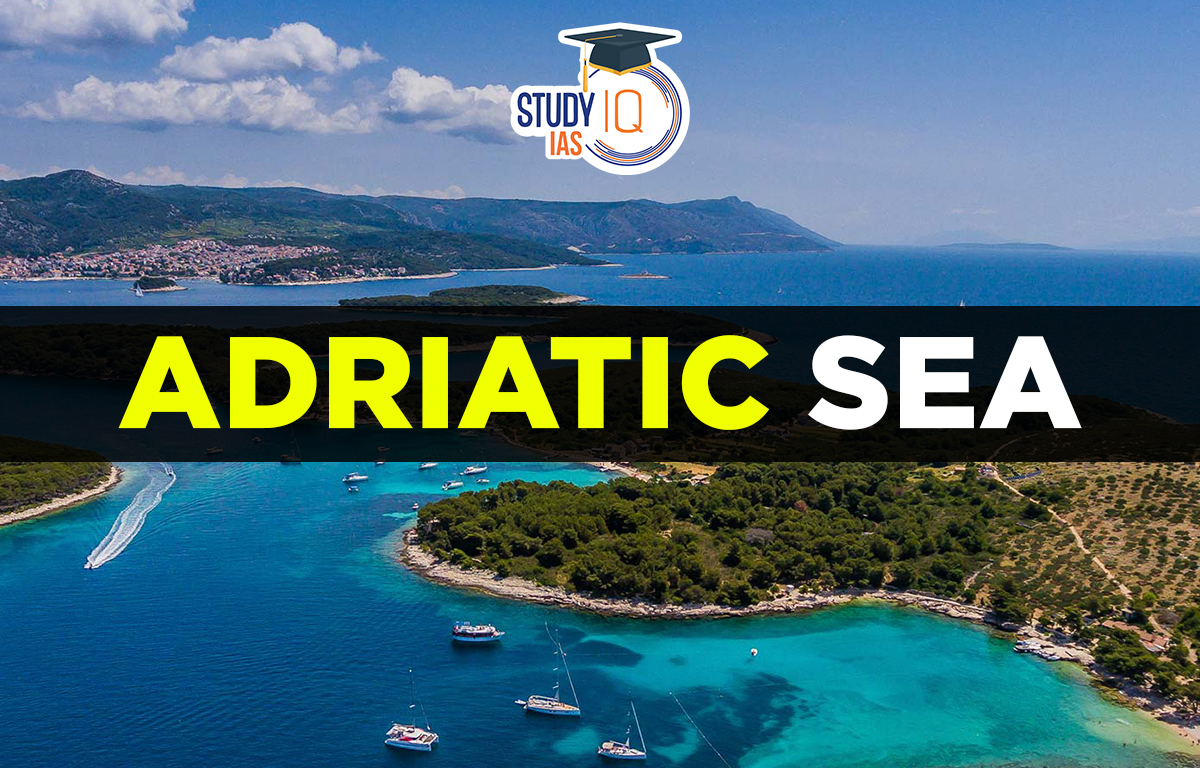Table of Contents
Adriatic Sea
The Adriatic Sea, which stretches from the Strait of Otranto to the northwest and the Po Valley, is the northernmost arm of the Mediterranean Sea. The Italian Peninsula and the Balkans are divided by the semi-enclosed Adriatic Sea. The Strait of Otranto is 72 km wide and links the Adriatic Sea to the Ionian Sea in the southeast. The countries that border the Adriatic Sea are Albania, Montenegro, Bosnia and Herzegovina, Croatia, Slovenia, and Italy. There are around 1300 islands in the Adriatic mostly located along the eastern side.
Read More: Atlantic Ocean
Adriatic Sea Basins
The Adriatic Sea has three basins. The southern basin is the deepest at 1233 meters, while the northern basin is the shallowest at 4045 feet. The Otranto Sill, an underwater ridge, connects the Adriatic and Ionian Seas. The Adriatic Sea has lower salinity than the Mediterranean because it receives a third of the freshwater flowing into the Mediterranean. Major rivers flowing into the Adriatic include the
- Soca,
- Krka,
- Po,
- Neretva,
- Bojana,
- Drin, and
- Vjose.
Tourism and fisheries are the sources of income along the Adriatic coast.
Read More: Sea of Azov
Adriatic Sea Bordering Countries
The Adriatic Sea is part of the Mediterranean Sea. It is located between the countries on the Balkan Peninsula, including Slovenia, Croatia, Albania, and Montenegro, and the eastern coast of Italy. At the southern end of the Adriatic, the Strait of Otranto separates the Salento Peninsula in Albania from the “boot” of Italy. Just south of this strait is the Ionian Sea.
Read More: Arabian Sea
Adriatic Sea Location
The Adriatic Sea, also known as Mare Adriatico in Italian, Jadransko More in Bosnia, Croatia, and Montenegro, and Deti I Adriatikut in Albania, is an arm of the Mediterranean Sea that is situated between the Italian and Balkan peninsulas. At its southernmost point, the Strait of Otranto connects it to the Ionian Sea.
Read More: Sea of Japan
Adriatic Sea Islands
The Adriatic Sea Island information are as follows:
- The Adriatic Sea has over 1300 islands and islets, mostly along the eastern shore.
- Croatia is home to 1246 of these islands, including islets and rocks.
- The largest Croatian islands are Cres and Krk, each about 405.78 square kilometers.
- Bra is the tallest Croatian island, with a peak of 780 meters above sea level.
- A small canal separates Loinj Island from Cres; the Greeks called Cres Apsyrtides.
- Croatia has 47 permanently inhabited islands, with Krk, Korula, and Bra having the most residents.
- Venice is built on 117 islands, but the western (Italian) islands are smaller and fewer than those in Croatia.
- The International Hydrographic Organization (IHO) defines the Adriatic Sea’s northern boundary at the Greek island of Corfu.
Read More: South China Sea
Adriatic Sea Climate
The southern Adriatic has a hot-summer Mediterranean climate, while the upper Adriatic has a humid subtropical climate with wetter summers and colder winters. Temperatures can change by about 20 °C throughout the seasons. Two main winter winds are the bora and sirocco. The bora brings cold, dry air and is strongest near Trieste, Senj, and Split, with gusts up to 180 kph. The sirocco brings warm, humid air and can carry sand from the Sahara, leading to rain and dust.
Read More: East China Sea
Adriatic Sea UPSC
The Adriatic Sea connects the Gulf of Venice to the Ionian Sea by extending southward to the Strait of Otranto. Italy, Croatia, Bosnia and Herzegovina, Montenegro, Albania, and Slovenia are bordering nations.
Read More: Atlantic Ocean


 Story of Meera Bai and Her Devotion For ...
Story of Meera Bai and Her Devotion For ...
 Desert Climate, Distribution, Climatic C...
Desert Climate, Distribution, Climatic C...
 Deserts of India Map, Features of Thar D...
Deserts of India Map, Features of Thar D...





















